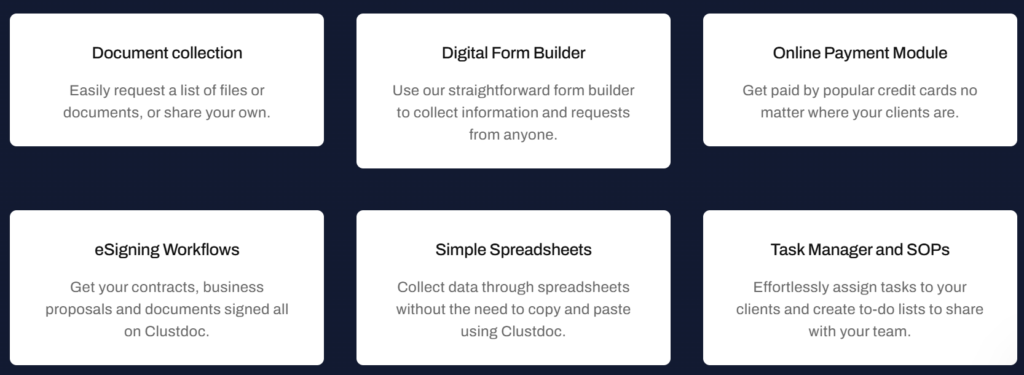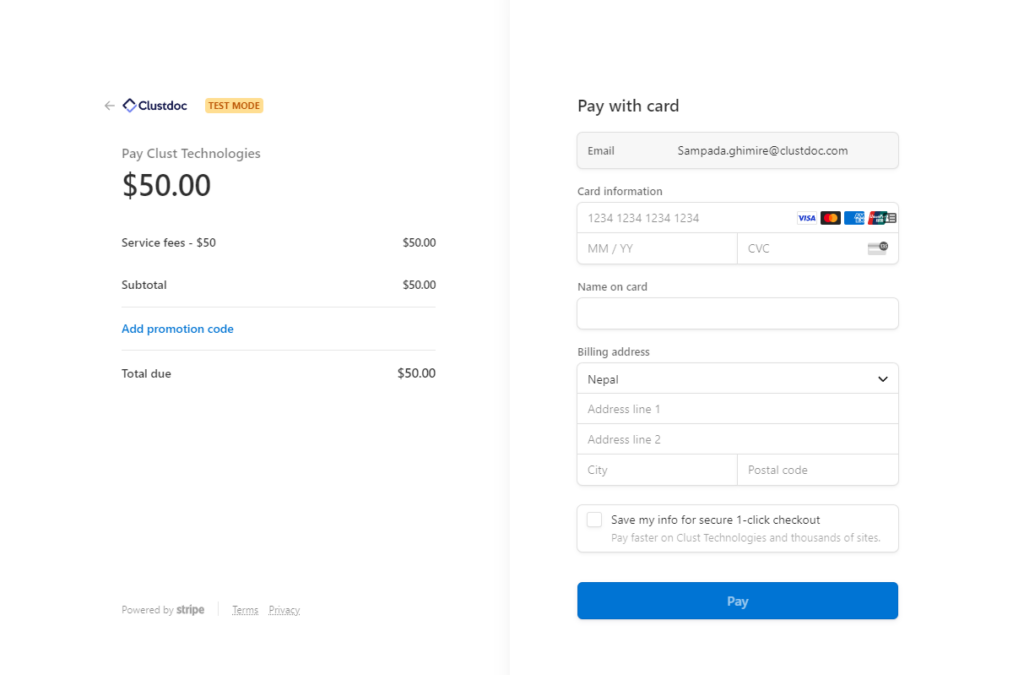
10 tips for onboarding international clients remotely
Summary
If you’ve had any experience onboarding international clients remotely, you are probably aware of how much of a hassle it can be. Many times, your clients’ reactions vary greatly from your expectations. And the worst part is that you have no idea what you did wrong.
Chances are, you probably did everything right. However, one big issue that comes with international clients is that they are completely different from the customers you are used to selling to. And because of this, it is even more important to pay greater attention when onboarding international clients remotely.
Why should you focus on onboarding international clients remotely?
A good first impression can go a long way in establishing a great relationship. This is especially true for your relationship with your clients, regardless of whether they are local or international. If you can create a lasting and positive impression on them, you will have a much higher chance of client retention and increased customer satisfaction.
And what better way to accomplish this task than a good client onboarding experience? With a proper customer onboarding process, you will be able to introduce your company and all you can offer to your international client in a smooth manner.
This not only facilitates a greater understanding between your company and your international client but also sets the foundation for increasing customer loyalty. In the long run, this can save your company a ton of money, time, and other resources.
According to research done by Frederick Reichheld of Bain & Company (the inventor of net promoter score), increasing customer retention rates by just 5% increases profits by 25% to 95%.
Several studies have also concluded that depending on what industry you are in, acquiring new customers is anywhere between 5 to 25 times more expensive than retaining an existing one.
Given these numbers, it’s obvious to see just how important it is to build a good relationship with your clients. Many business owners understand this, and they have put much effort into improving their client onboarding process.
However, not every business has been able to find the correct formula for successfully onboarding clients. It’s even more so the case if we consider the process for onboarding international clients remotely.
Here are 10 tips for the optimization of the process for onboarding international clients remotely to help you improve the customer experience.
10 tips for onboarding international clients remotely
1. Onboarding using the right digital onboarding software
The onboarding process can be a tedious one with lots of complications. If handled poorly, it can even hurt your client’s relationship with your company instead of helping it.
The process needs to be a smooth journey for your clients, leading them through each step conveniently without ever bombarding them with too much information. Additionally, you should also be getting to know your client in the process so that you can better provide for them.
Ensuring that you are doing all this properly can be difficult. Even more so if you are onboarding international clients/multiple clients at the same time.
However, the process can be made much simpler if you have the correct tools. With the right digital onboarding software, you can easily improve the process of onboarding international clients remotely.

Onboarding software like Clustdoc are designed to help you onboard clients smoothly and reliably every single time. Not only do they come equipped with tools that allow you to create forms for collecting information from your clients in an easy manner, but they also come with features that enable you to run interactive onboarding flows on any device.
When onboarding international clients remotely, this can be a big advantage as it simplifies the entire process and makes it more engaging for your clients.
2. Set clear expectations and effectively communicate with them
Setting clear expectations with your new international clients will help them and your company stay on the same page. It’s much easier to move forward together when both parties have a mutual understanding of their goals and expectations.
Once you are clear on what your international clients expect of you, your business will be better prepared to meet those expectations. Also, if there are things that you won’t be able to fulfill on your end, or if the expectations are too high, it’s much easier to sort it out in the initial phases.
Furthermore, this also helps build a habit of effectively communicating with your clients. This will come in handy in the long run as you will be able to understand your international client on a deeper level. Especially because international clients can have huge differences (such as cultural differences and different business values) compared to clients you are used to dealing with.
3. Understand client background and what they need to achieve their goal
A common mistake businesses often make when onboarding international clients remotely is that they assume the needs of international clients are similar to the ones of your local clients.
In many cases, international clients have varying degrees of needs and expectations. To get a proper grasp of these, it is important to understand their backgrounds as well as their goals.
Taking care of these matters during the onboarding process makes everything that follows simpler. On one hand, it gives you a better understanding of your client to help you give greater value to them. On the other hand, it helps you map out the part you can play in helping them reach their organizational/personal milestones, thus helping you earn a loyal customer.
4. Make your clients feel special with a warm welcome email
You and your international clients may have a lot of differences in your values and customs. However, it doesn’t change the fact that everybody likes being appreciated.
You can show your international clients that you value them by making them feel special with a personalized welcome email. Not only will this create a good first impression but also help them build a positive attitude towards working with you.
A lot of the time, this can also act as an ice breaker, opening up the possibilities for more effective communication and collaborations.

5. KYC is important to verify your international clients
Potential clients are valuable to your business and you need to tend to them with utmost care. However, that doesn’t mean you shouldn’t filter out individuals who don’t fit the image you have for a client.
Failing to do so can result in your business wasting a lot of valuable time, money, and other resources. In some instances, you will also be exposing yourself to the risk of frauds and schemes.
If you want to avoid such scenarios, you need to do a thorough check on your potential client’s identity with the help of KYC (Know Your Customer) and due diligence. Not only can this help you steer clear of fraudulent individuals, but also performs identity verification of your international clients.
6. Guide your customers through the onboarding phase
According to research, 89% of customers experience friction and frustration during their onboarding phase. Out of that 89%, 13% will even decide to switch to a competitor.
This boils down to a lot of factors, but one of the major causes is the process often being too overwhelming. You can alleviate much of this frustration and friction for your customers by simply guiding them through the onboarding phase.
The chances of your international clients finding the onboarding phase cumbersome will be reduced by a great amount if you have someone guiding them through the process. With proper guidance, the onboarding experience can be turned into one that’s not just bearable but also pleasant for the customer.
With this, you can introduce your business and your services in the best way possible. Guiding them through the onboarding phase will also help you keep your customers engaged throughout the entire process, thus increasing the chance of you retaining them.
7. Focus on building a strong relationship
Getting to know your international clients is important, but it is just as important to focus on building a strong relationship with them. After all, a loyal customer who has been with you for a long time is a valuable part of your business that’s hard to replace.
Not only are loyal customers more likely to use your services time and again, but they also engage with you more often, letting you know what you can do to improve your services and be of more value to other clients.
Furthermore, if you have a strong relationship with your clients, it will help them feel secure and connected with your business. This increases customer retention, as well as your repeat purchase rate.
In fact, your international customers feeling connected to your business can be one of your best advantages against your competitors. According to a survey, 86% of customers said that if they had an emotional connection with a customer service agent, they would be willing to continue to do business.
8. Ask for their feedback and bring changes that suit your international clients
As stated previously, the needs and goals of your international clients can vary greatly when compared to your local clients. If you want to continue being of value to them and establish a strong relationship, it is crucial to pinpoint what changes will put them at ease.
However, making changes without a complete understanding can possibly bring them greater discomfort instead of helping you. The best way to go about such a thing is to be direct and ask for feedback from them when you are onboarding international clients.
This will make them feel heard and appreciated, resulting in them becoming proactive when it comes to making suggestions for changes. Considering good feedback and implementing feasible suggestions can help you in creating an environment your international clients will appreciate and feel comfortable in.
An easy way to get suggestions, feedback, and referrals from your clients would be to redirect your customers to a ‘Thank You’ survey or Google review page after the onboarding process ends.

9. Assign onboarding customer success manager to big clients
Given how important international clients are to your business, keeping them happy can almost be seen as a necessity. However, it can oftentimes be difficult to put yourself in their shoes and figure out exactly what they want.
This is where customer success managers come in. They are dedicated individuals who interact directly with your customers while also acting as their voice.
Doing so not only allows them to facilitate a smoother relationship between your sales team members and your international clients but also understand your clients on a much deeper level.
This understanding can be a great asset for your business, especially when it comes to onboarding international clients and turning them into loyal customers. Assigning onboarding customer success managers to big clients can also help you improve the onboarding experience, increasing the likelihood of them continuing to work with you.
10. Use safe and secure methods to receive payments
Using safe and secure methods to receive payments is a must when onboarding international clients, or any other clients for that matter.
For many clients, feeling unsure of the payment system can be a big deal-breaker. In fact, 58% of customers blame a failure to complete a payment on security concerns. Many even decide against completing the transaction. And who can blame them? Why work with an entity you don’t feel secure dealing with?
You can avoid losing clients to this problem by using safe and secure methods to receive payments. Doing so can help you and your customers save a considerable amount of time and effort.
Furthermore, a quick and secure way of completing payments can leave a positive impression on your clients. This increases the likelihood of your clients coming back to you for your services, as well as putting their security concerns to rest.
Some onboarding software make online payments quick and convenient for your customers. For instance, Clustdoc’s advanced online payment feature helps businesses collect online payments from their clients on a secure interface without ever having to leave the onboarding portal.

Onboard your international clients with a modern onboarding system
Now that you know what are the things that you need to focus on while onboarding international clients, choose a modern and intuitive onboarding system to make the onboarding experience a breeze. One of the leading names in the onboarding industry is Clustdoc.
Our onboarding tool comes with great features that will benefit both you and your international clients. With features like simplified document collection, e-signature, online payment, workflow automation, digital form builder, and auto-triggered actions, your international clients will have the best onboarding experience.
Register for Clustdoc’s free 7-day trial to find out what we are actually talking about.
Get to know Clustdoc
Clustdoc is a professional Client Onboarding and Verification Software.
Many teams use Clustdoc to orchestrate, run and manage repeated industry-specific onboarding workflows with clients or stakeholders:
– Automate routine workflows – no more paper documents
– Get rid of manual tasks and decrease approval lag time
– Stop chasing data and files across multiple tools
– Improve customer engagement and satisfaction

Sampada Ghimire
Sampada is an alum of Clustdoc's content marketing team. She's passionate about marketing, business, and technology - anything that makes life easier for businesses.


